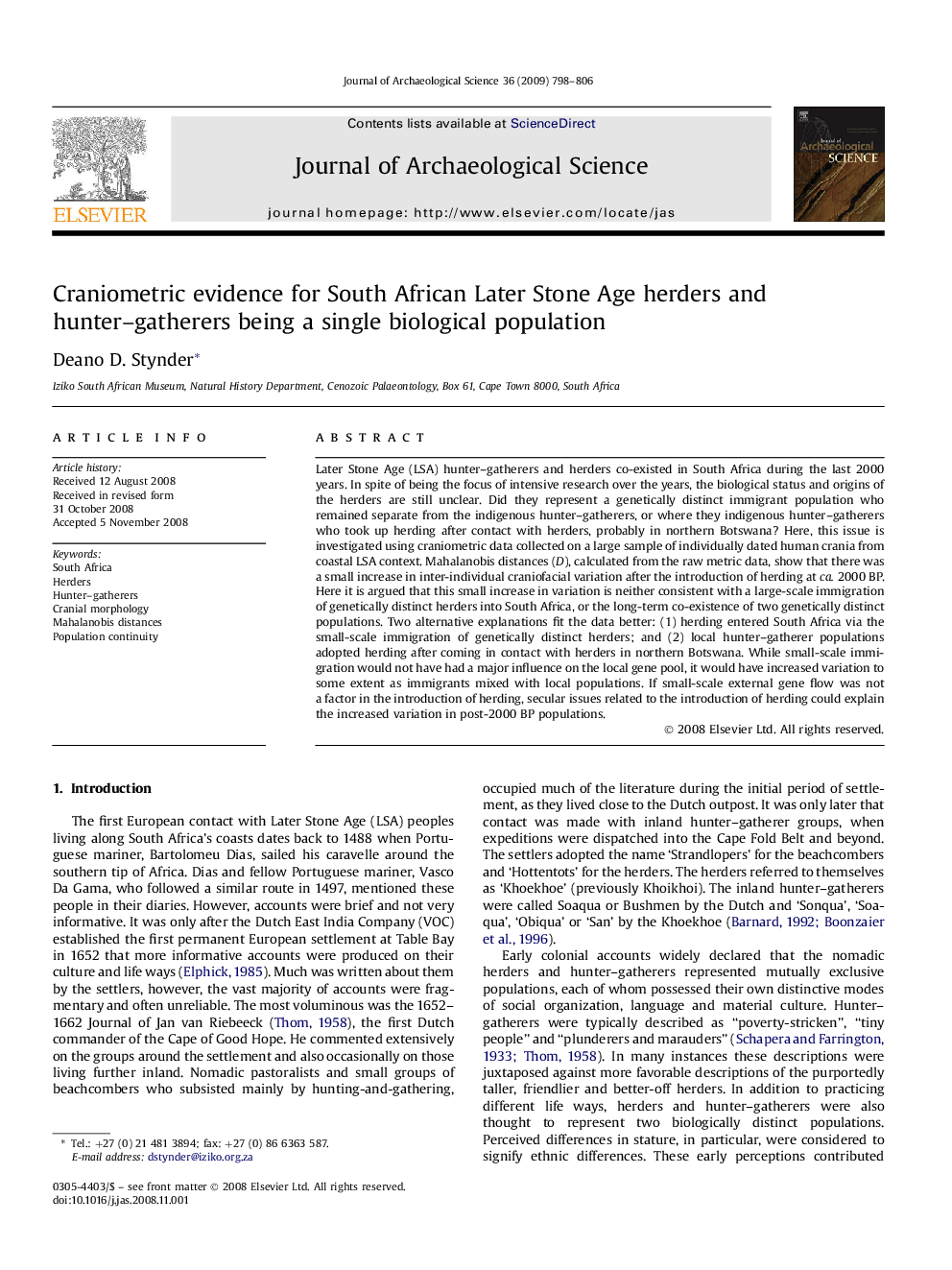| کد مقاله | کد نشریه | سال انتشار | مقاله انگلیسی | نسخه تمام متن |
|---|---|---|---|---|
| 1036818 | 943898 | 2009 | 9 صفحه PDF | دانلود رایگان |

Later Stone Age (LSA) hunter–gatherers and herders co-existed in South Africa during the last 2000 years. In spite of being the focus of intensive research over the years, the biological status and origins of the herders are still unclear. Did they represent a genetically distinct immigrant population who remained separate from the indigenous hunter–gatherers, or where they indigenous hunter–gatherers who took up herding after contact with herders, probably in northern Botswana? Here, this issue is investigated using craniometric data collected on a large sample of individually dated human crania from coastal LSA context. Mahalanobis distances (D), calculated from the raw metric data, show that there was a small increase in inter-individual craniofacial variation after the introduction of herding at ca. 2000 BP. Here it is argued that this small increase in variation is neither consistent with a large-scale immigration of genetically distinct herders into South Africa, or the long-term co-existence of two genetically distinct populations. Two alternative explanations fit the data better: (1) herding entered South Africa via the small-scale immigration of genetically distinct herders; and (2) local hunter–gatherer populations adopted herding after coming in contact with herders in northern Botswana. While small-scale immigration would not have had a major influence on the local gene pool, it would have increased variation to some extent as immigrants mixed with local populations. If small-scale external gene flow was not a factor in the introduction of herding, secular issues related to the introduction of herding could explain the increased variation in post-2000 BP populations.
Journal: Journal of Archaeological Science - Volume 36, Issue 3, March 2009, Pages 798–806